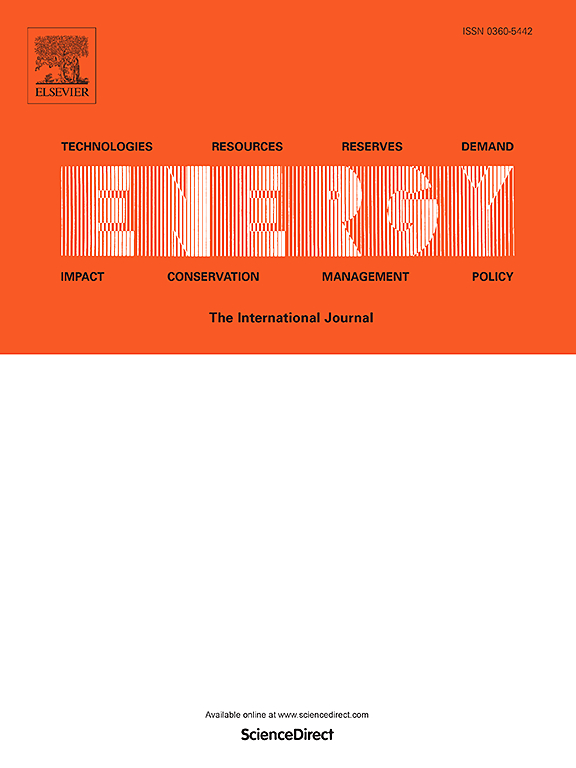基于GPM和CFD的叶片附属物对列管泵流体动力性能和能量性能的影响分析
IF 9
1区 工程技术
Q1 ENERGY & FUELS
引用次数: 0
摘要
沿海列管泵的叶轮长期浸没在水中,容易附着各种水生生物,严重影响列管泵的能耗和安全运行。基于多维流场动力学分析(MFFDA)方法,分析了不同叶片附着面积比(baar)下叶轮叶片表面的流场和能量特性。结果表明:流量和baar的变化会引起循环导数沿轴向流线相对位置的波动,循环导数的范围从0.6Qbep时的- 50-80 m2 s−1减小到1.0Qbep和1.2Qbep时的- 10-30 m2 s−1;随着baar的逐渐增大,流型更加无序,叶轮出口段流型均匀性提高;但速度加权平均角减小。叶片附着物导致叶片表面的熵产率(EGR)显著增加,泵装置的效率降低。随着流量和baar的增大,叶片附属物后的高EGR区域范围增大,EGR也随之增大,从2 - 7w m−2k−1增加到7w m−2k−1以上。本文章由计算机程序翻译,如有差异,请以英文原文为准。
Analysis of the influence of blade attachments on the hydrodynamic behavior and energy performance of the tubular pump based on GPM and CFD
The impellers of coastal tubular pumps have long been submerged in water and are easily attached to various aquatic organisms, which seriously affects the energy consumption and safe functioning of tubular pumps. The flow field and energy performance of the impeller blade surface under various blade attachment area ratios (BAARs) were analyzed based on the multi-dimensional flow field dynamic analysis (MFFDA) method. The results show that changes in the flow rate and BAARs cause fluctuations in the circulation derivative along the relative position of the axial streamline, with the range of the circulation derivative decreasing from −50–80 m2 s−1 at 0.6Qbep to −10–30 m2 s−1 at 1.0Qbep and 1.2Qbep. As the BAARs gradually increased, the flow pattern became more disordered, and the flow pattern uniformity at the impeller outlet section improved; however, the velocity weighted average angle decreased. Blade attachments lead to a significant increase in the entropy generation rate (EGR) on the blade surface and a decrease in the efficiency of the pump device. As the flow rate and BAARs expand, the range of high EGR zones behind the blade attachments increases, and the EGR rises accordingly, from 2–7 W m−2 K−1 to more than 7 W m−2 K−1.
求助全文
通过发布文献求助,成功后即可免费获取论文全文。
去求助
来源期刊

Energy
工程技术-能源与燃料
CiteScore
15.30
自引率
14.40%
发文量
0
审稿时长
14.2 weeks
期刊介绍:
Energy is a multidisciplinary, international journal that publishes research and analysis in the field of energy engineering. Our aim is to become a leading peer-reviewed platform and a trusted source of information for energy-related topics.
The journal covers a range of areas including mechanical engineering, thermal sciences, and energy analysis. We are particularly interested in research on energy modelling, prediction, integrated energy systems, planning, and management.
Additionally, we welcome papers on energy conservation, efficiency, biomass and bioenergy, renewable energy, electricity supply and demand, energy storage, buildings, and economic and policy issues. These topics should align with our broader multidisciplinary focus.
 求助内容:
求助内容: 应助结果提醒方式:
应助结果提醒方式:


